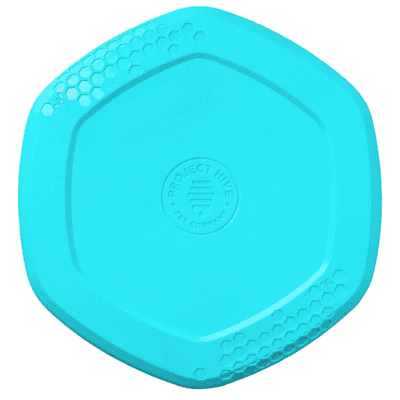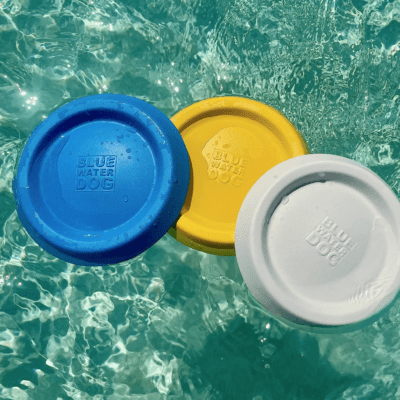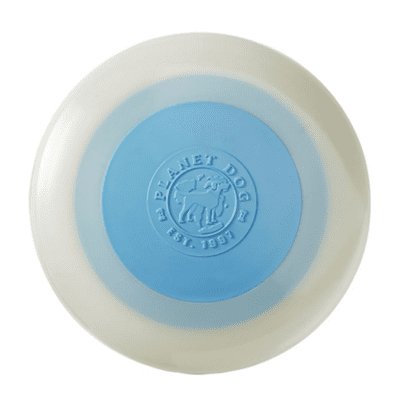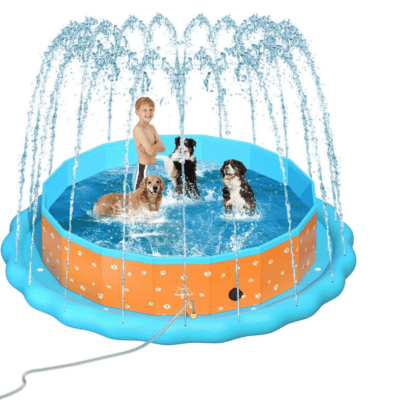How To Give Your Dog Swim Lessons

How To Give Your Dog Swim Lessons
A guide to teaching your dog to swim or just love the water
Many dog breeds are natural born swimmers, but others need to be taught or trained to swim. Dogs who’s instincts kick in and they begin to paddle have a head start, but other breeds either don’t have those instincts or they are not able to swim. Before embarking on dog swimming and water lessons, do the research on your dog’s breed, weight balance and make sure they enjoy the water. In this article we will explore dog swimming lesson techniques, tricks to make the process more enjoyable for everyone, and things to be aware of to make sure no one is in danger.
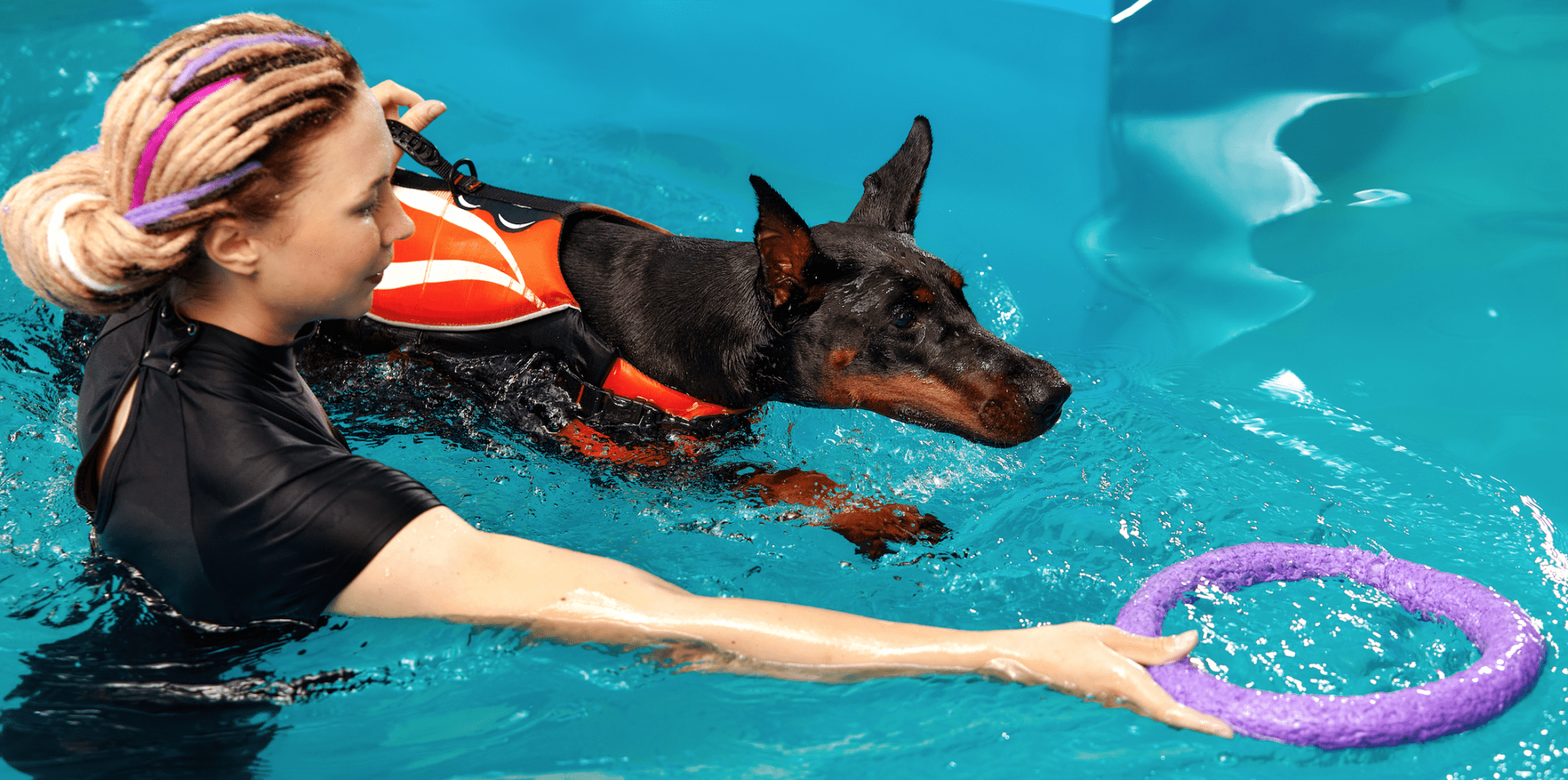
Giving your dog swim lessons can be a fun, rewarding and good fitness for both you and your pet. We pulled together tips and ideas from pet experts and those who are in the know when it comes to improving your pet’s swimming skills. One question we often get is if it is safe for dogs to swim in chlorinated pools. The answer is yes, but like humans it is never a good idea to drink it and when you are done, a quick shower to remove the chlorine is perfect.
Introducing Your Pup To The Water
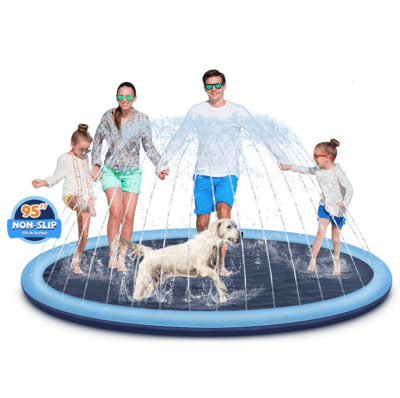
Introduce your dog to water before trying to pool with this large slip and slide designed for pets and people
How To Teach Your Dog To Love Video…
Great tips to help you introduce your pup to the water and make them water lovers in no time.
These Dog Breeds Are Known to Not Love The Water
- Chihuahuas
- Yorkies
- Shih Tzus
- Pugs
- Dachshunds
- Pekingese
- Boxers
- Greyhounds
- Pomeranian
- Maltese
- Bichon Frise
- Mixed Breeds dominant in any of these breeds
While not all dog breeds love the water, most really enjoy it. If your pup has a little bit of dog breed that does not love the water, be creative in how you introduce them, offering treats and reinforcing the behavior, but there is never a need to push it if you do just does not want to spend time in the water.
Here are some steps to help you get started teaching your dog to swim:
- Choose a suitable water location: A calm and shallow body of water such as a pool, lake, or a calm beach is a great.
- Start slowly: Let your dog explore the water’s edge, allowing them to get comfortable with the sensation of water on their paws. Do not force them, let it be their choice and always reward them with positive reinforcement and treats when they make progress. If your dog is having trouble getting used to the water, where are some great tips from the dogsbestlife.com website.
- Support your dog: The water will make it easy to support even larger dog breeds in the water. Hold their underbelly, making sure to keep their heads above the water at all times. You want to allow to reside under as much water as possible giving them more buoyancy.
- Begin with basic swimming techniques: If you dog does not instinctively begin moving their front legs or all four legs, encourage them by moving their legs in a paddle motion, while moving their body forward. It is helpful to use verbal cues such as “swim” or “paddle” to help them understand the desired action. Reduce your support gradually, monitoring their ability to swim on their own. Do not stop supporting them until you feel they can comfortable swim forward on their own. Note: for dogs who are not able to swim on their own without support, a pet life jacket is very important, but you want to continue teaching them how to paddle and move forward so they can get themselves to safety.
- Gradually increase distance and depth: Once your dog is swimming on their own, gradually increase the distance they swim and the depth of the water. For dogs who do not naturally excel at swimming on their own or with some training, keep their life jacket on at all times near any body of water.
- Practice regularly: Consistency is key when teaching your dog to swim. Regular practice sessions will help them build confidence and improve their swimming abilities.
- Make it fun: You can begin introducing items for them to fetch in the water, putting them just outside of their reach, tossing multiple floating dog toys around giving them fetch options, or play catch by tossing a ball or toy for them to chase and bring back to you. Always toss or place items relatively close at first, giving your dog the opportunity to work up the strength and confidence to swim further distance.
Remember, not all dogs are natural swimmers, and some may require more time and patience to learn. It’s essential to prioritize your dog’s safety, provide a positive and supportive environment, and consult with a professional dog trainer or veterinarian if needed. Continually monitor fatigue and take ample breaks. Pay attention to your dog’s energy levels, look for signs of fatigue, and even through you are in water, they need fresh water breaks for hydration.
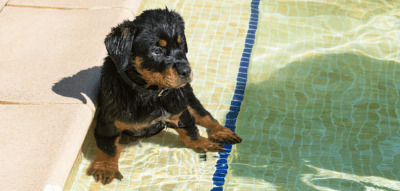
Introduce puppies to the water as soon as the weather permits and they will enjoy pool time with you from the very start. Along with swimming lessons, here are some great ideas to enjoy pool time with pups.
10 Fun Pool Play & Chill With Pups
- Pool Fetch – place floating balls or cubes on the water’s surfaces and time how long it takes your pup to bring them to you.
- Pup Keep Away – hold your dog’s toy behind your back or under the water and let them do what they do and find it.
- Pet Lounging – grab a floating or semi-submersible raft that you pup can relax and enjoy the pool without having to paddle.
- Water Hoops – toss them for and easy catch game. You might even teach your dog to stack the rings in the pool a great dog trick.
- Night Play – choose a few glow in the dark pet toys and jump in after dark. A great way to see how well your dog tracks at night.
- Catch Me If You Can – last one in is a rotten egg. Ready, set and go to see who jumps in first or who can jump in and swim across the pool first.
- Pool Party – plan a pool party with your favorite pets and people with games, treats and relaxation.
- Pup only Pool – for pups that love there water, but are not so fond of the big pool, make or buy them one of their own. Here is a great video on how to build a gorgeous dog pond or backyard pool by Everything Ponds.com
Great Dog Pool Toys for training and fun:
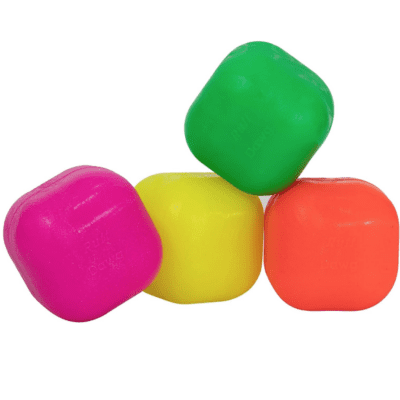
We love these neon cubed dog toys that are made in the USA. The perfect size to play ball and fetch and they float on the water, making them easy to find and to collect.
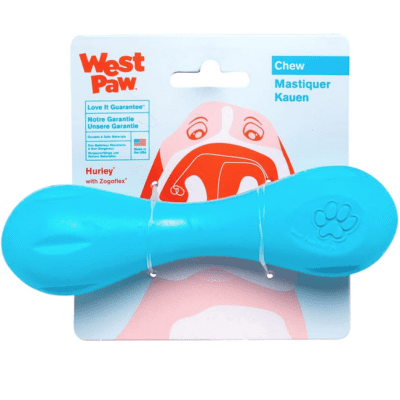
Toss this waterproof, floating dog stick in the pool, lake, or ocean for hours of fun. A great way to introduce pups to the shallow water by playing catch.
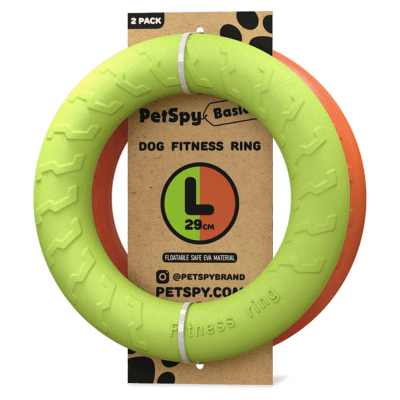
Great for fun and fitness, these floating rings are great to toss across the pool, lake, or stream. Easy for your pup to grab and bring back to you.
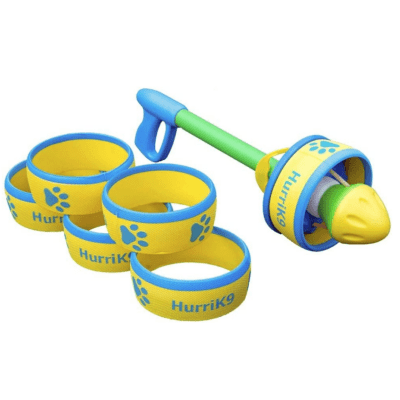
Keep your pup entertained as you lounge in the pool with this awesome ring launcher that will give you pup plenty of play and enjoyment.
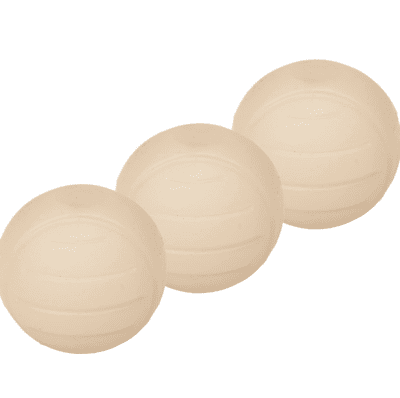
Toss these glow in the dark balls in the pool or from the pool and enjoy a little nighttime fun with your pup.
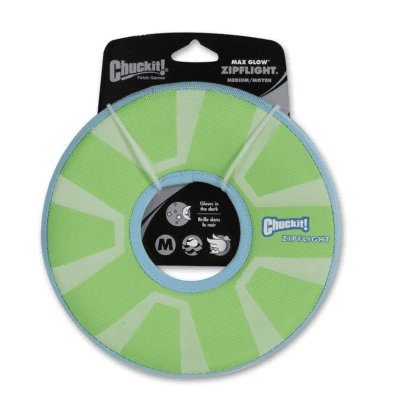
This soft-sided dog toy glows in the dark, floats and is easy on your pups teeth and gums. A great pool toy.
Pet Pool Loungers & Pools
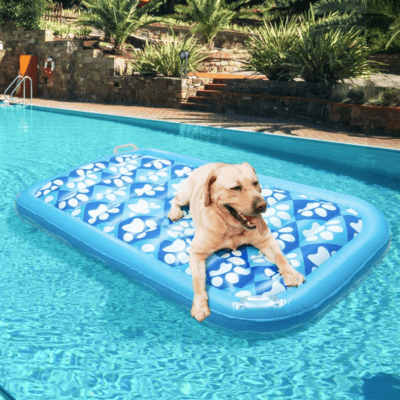
Train puppies to love the water and introduce them to relaxation heaven with a large floating lounger that is sizes right for larger breeds.
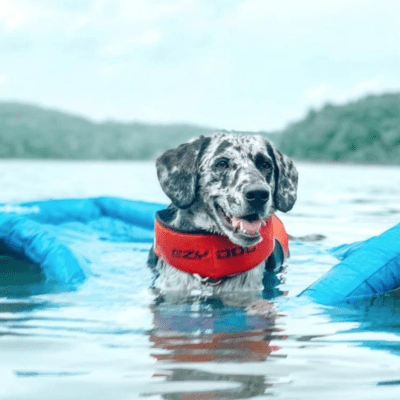
This high quality dog raft floats just under the surface of the water allowing dogs to stay cool in the water while keeping them at the surface.
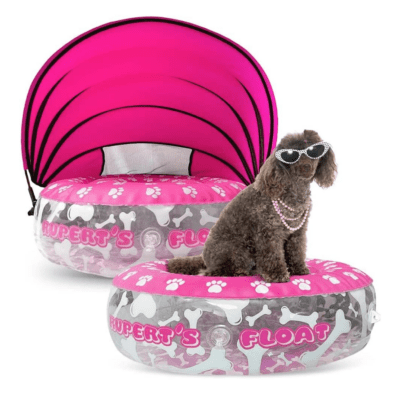
When the hot sun is a bit much for float loving pooches, try this roll up covered raft that has plenty of curling up room for a relaxing day at the pool.
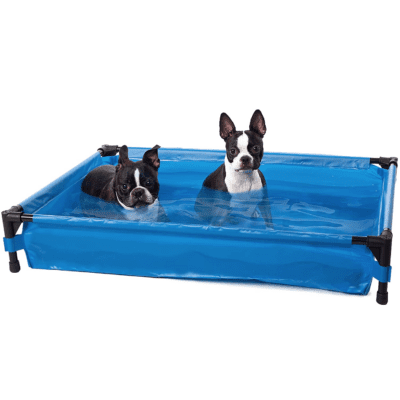
Set up this great dog pool in your backyard or fold it up and take it to the beach, campsite, or vacation spot to help pups beat the heat.
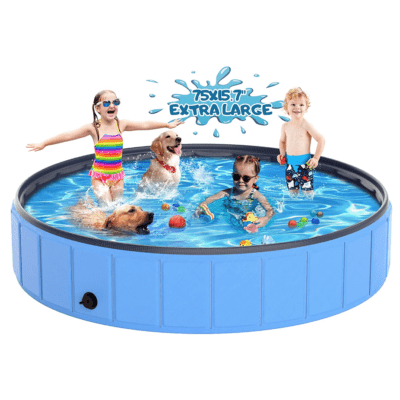
Add a water feature to the backyard that is ideal for pets and kiddos to cool off on hot summer days. This extra-large option has plenty of room for all.
Can you teach a cat to swim?
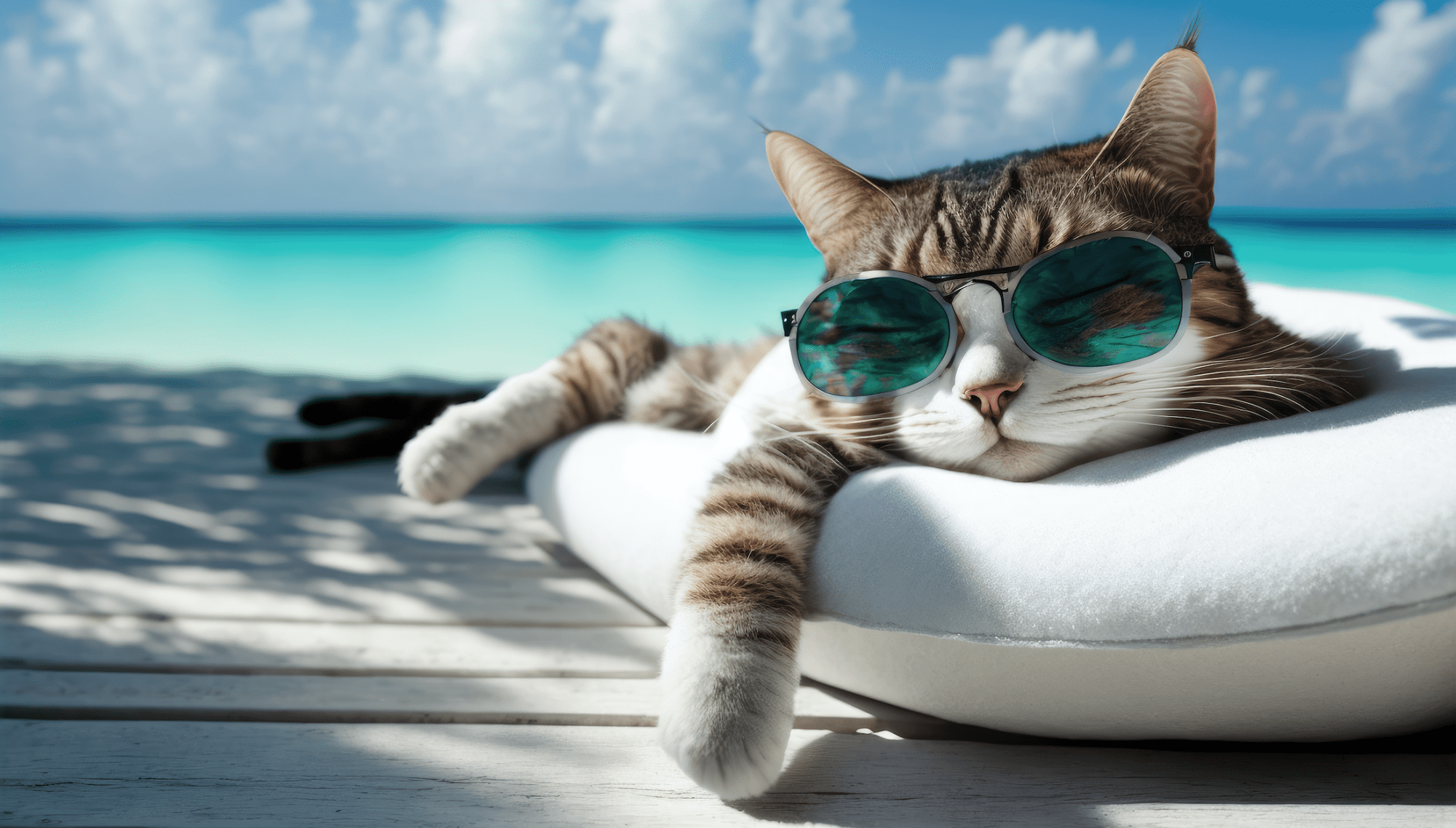
The short answer is that most cats while they do not care for it, can actually swim. Cats with longer fur however may get weighted down and it is actually dangerous for them to be in or near water. Curious cats have been known to test the boundaries and get very close to the waters edge or even slip in, so alway keep an eye on your cat when the pool is open to make sure they have an exit plan. On an interesting note, Maine Coon and Turkish Van cat breeds actually enjoy the water and have been known to swim for pleasure.
Cats do love to drink moving and fresh water, so you may find them sneaking a drink from the pool every now and then. A sip or two won’t hurt them, but if you find your cat is drawn to the water, consider a fresh water fountain that you maintain outside that is for the cat only!
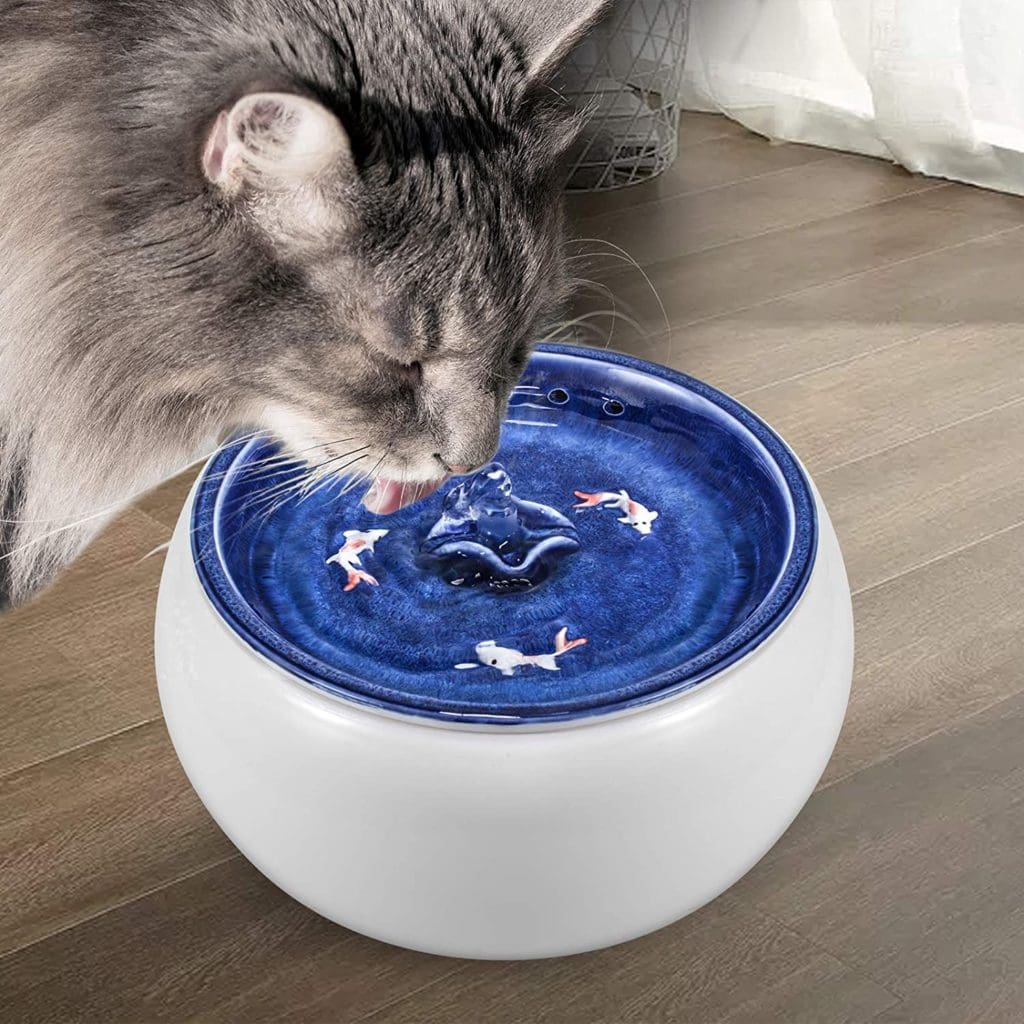
Not all dogs are natural born swimmers, some breeds are not built for it, and others just don’t like the water


